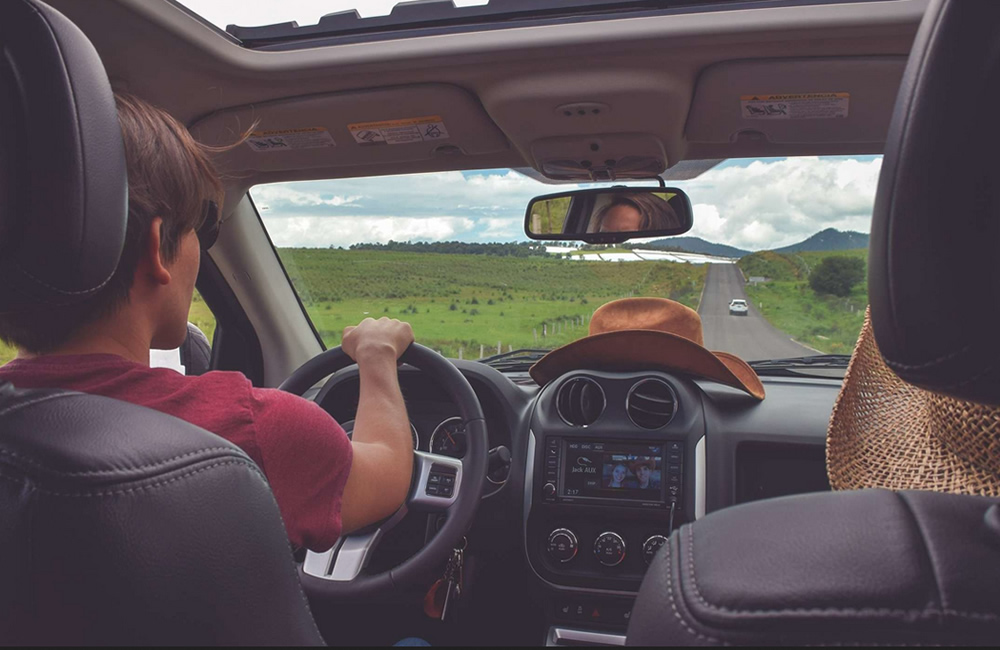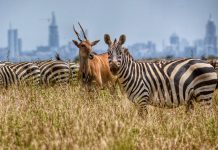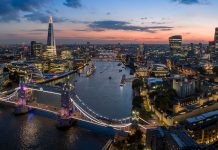Imagine traversing the heart of Africa, where the sun ascends over vast savannahs, elephants meander across your route, and the distant roar of a lion reverberates through the wilderness. A self-drive safari presents an unparalleled adventure, granting you the liberty to explore at your own rhythm and uncover Africa’s stunning landscapes and remarkable wildlife according to your preferences. In contrast to guided tours, a self-drive safari empowers you to dictate your own itinerary—determining your destinations, the duration of your stays, and the experiences you wish to embrace.
Whether your goal is to track the Big Five in South Africa’s Kruger National Park, observe the Great Migration in Tanzania’s Serengeti, or navigate the majestic dunes of Namibia, this guide encompasses all the essential information you require. We outline the premier destinations, vital tips, and key facts to assist you in planning the ultimate self-drive safari in Africa.
Why Choose a Self-Drive Safari?
A self-drive safari presents an ideal choice for independent travelers seeking a more personalized and immersive adventure. Here are the reasons:
Freedom and Flexibility: You have the authority to manage your own timetable. Interested in observing a pride of lions for an extended period? You are free to do so. Feel like making an impromptu stop at a secluded waterhole? Feel free to proceed.
More Affordable: Self-driving typically proves to be more economical than reserving a guided safari. The expenses are limited to park fees, fuel, and lodging, rendering it a cost-effective choice.
Closer to Nature: You have the opportunity to engage profoundly with the wilderness, relishing serene moments in nature free from distractions, as there are no tour guides imposing rigid schedules.
Great for Photography: You have the opportunity to leisurely capture stunning images of landscapes, wildlife, and sunsets without the pressure of hurrying to your next location.
Best Destinations for Self-Drive Safaris in Africa
Africa boasts a variety of self-drive safari destinations, each providing distinct wildlife encounters and breathtaking landscapes. Below are some of the premier locations.
Kruger National Park, South Africa
Kruger National Park stands out as one of Africa’s premier destinations for self-drive safaris. Its well-maintained roads, clear signage, and reasonable entry fees make it an excellent choice for both novice and seasoned travelers. The park boasts a diverse array of wildlife, including lions, elephants, rhinos, leopards, and buffaloes, providing ample opportunities to observe the Big Five. Furthermore, Kruger features a comprehensive network of camps and lodges, guaranteeing comfortable accommodations throughout your journey.
Etosha National Park, Namibia
Etosha National Park serves as an ideal location for those who appreciate self-drive safaris. Its expansive salt pan, numerous waterholes, and open grasslands facilitate effortless wildlife observation. In the dry season, various animals congregate around the water sources, providing opportunities to observe elephants, giraffes, lions, and black rhinos. Additionally, the park features well-appointed campsites and lodges to enhance the visitor experience. The well-maintained roads and straightforward navigation make it a superb option for individuals embarking on their first self-driving adventure in Africa.
Serengeti National Park, Tanzania
The Serengeti is renowned for the Great Migration, during which vast numbers of wildebeest, zebras, and gazelles traverse the plains in pursuit of new grazing grounds. Although many visitors opt for guided tours to experience the Serengeti, adventurous travelers also have the option to explore independently. This allows for the opportunity to observe predators such as lions, cheetahs, and hyenas as they hunt in their natural environment. For those considering a self-drive adventure in the Serengeti, it is essential to have a robust 4×4 vehicle, as the road conditions can be challenging, particularly following rainfall.
Masai Mara National Reserve, Kenya
The Masai Mara presents an exhilarating self-drive adventure characterized by expansive savannahs, undulating hills, and abundant wildlife. It ranks among the premier locations for observing lions, leopards, and cheetahs in their natural habitat. Although the road infrastructure is less advanced compared to that of Kruger or Etosha, a reliable 4×4 vehicle enhances the overall experience. Additionally, the reserve plays host to a segment of the Great Migration, solidifying its status as one of Africa’s most captivating wildlife destinations.
Bwindi Impenetrable National Park, Uganda
For individuals keen on gorilla trekking, Bwindi presents a demanding yet fulfilling self-drive opportunity. Although a guide is required for the actual gorilla tracking, navigating to the park independently enhances the overall experience. The roads may be difficult, particularly in the rainy season, thus necessitating a robust 4×4 vehicle. With more than half of the global population of mountain gorillas residing in the park, it stands as a unique destination that one should not miss.
Tips for a Successful Self-Drive Safari
Choose the Right Vehicle
A dependable 4×4 vehicle especially from Self-Drive East Africa is crucial for the majority of self-drive safaris in Africa. While certain parks feature paved roads, others necessitate off-road driving, particularly during the rainy season. Opting for a rental from a reputable company such as 4×4 Africa guarantees access to a well-maintained vehicle that is appropriate for your journey. It is important to ensure that your rental includes a spare tire, a jack, and essential repair tools.
Plan Your Route in Advance
It is advisable to investigate the most suitable routes, park entry points, and fuel stations prior to embarking on your journey. The national parks in Africa are extensive, and without proper planning, it is easy to become disoriented. To navigate effectively, ensure you have a GPS device, offline maps, and relevant guidebooks. Given that certain regions may have sparse road signage, a well-defined plan will assist in preventing unnecessary diversions.
Book Park Permits Early
Certain parks, particularly those that attract a significant number of tourists, necessitate the acquisition of entry permits. For instance, gorilla trekking in Uganda and Rwanda mandates prior reservations. It is recommended to obtain all required permits prior to your journey to prevent any potential disappointment.
Know the Park Rules
Every park establishes regulations aimed at safeguarding both wildlife and visitors. Typical guidelines involve remaining inside your vehicle, keeping a safe distance from animals, and refraining from making loud noises. Violating these regulations may lead to fines or restrictions from the park. It is essential to adhere to the park’s rules to guarantee a safe and pleasant experience.
Pack Essential Supplies
Ensure you pack sufficient food, water, fuel, spare tires, and emergency supplies. Certain parks lack nearby towns, making it essential to have all necessary items for a seamless journey. Additionally, a first aid kit, insect repellent, and sun protection are crucial. Bringing binoculars for enhanced wildlife observation is also advisable.
Challenges of Self-Drive Safaris
Self-drive safaris provide remarkable experiences; however, they are not without their challenges. Among the primary difficulties are:
Navigation Issues: Certain regions exhibit inadequate road signage, and the availability of mobile network coverage may be restricted. Utilizing a GPS device and offline maps will prove beneficial.
Road Conditions: Certain paths may be uneven, muddy, or sandy, necessitating proficient driving abilities. It is advisable to be ready for off-road navigation.
Wildlife Encounters: It is important to remain composed and adhere to park regulations when encountering wild animals in proximity to your vehicle.
Breakdowns: Vehicle problems may arise in isolated locations, making it advantageous to possess fundamental mechanical knowledge. It is advisable to rent from companies that provide round-the-clock roadside assistance like Self-Drive East Africa and Self-Drive Uganda.
Best Time for a Self-Drive Safari
The optimal time varies based on the specific park and your interests. In general:
Dry Season (June–October): Optimal for observing wildlife, as animals congregate near water sources. Additionally, the roads are more accessible for driving.
Wet Season (November–May): The scenery is more greener, and opportunities for birdwatching are outstanding. Nevertheless, the roads may be muddy and difficult for those driving themselves.
Conclusion
A self-guided safari in Africa represents one of the most exhilarating and fulfilling travel experiences available. It offers the opportunity to explore at your own rhythm, observe breathtaking wildlife, and engage deeply with the natural environment.
By selecting appropriate destinations, preparing thoroughly, and adhering to key recommendations, you can ensure a safe and memorable journey. Whether you are tracking lions in Kruger, witnessing the Great Migration in the Serengeti, or trekking gorillas in Bwindi, the untamed beauty of Africa beckons you to embark on an extraordinary self-drive safari.




